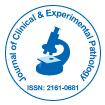Recent Updates on Huntington Disease
Received Date: Oct 09, 2023 / Published Date: Jan 16, 2025
Abstract
Huntington Disease (HD) is an autosomal dominant neurodegenerative disorder and a common cause of mortality. It affects both sexes and is prevalent in all ethnic group globally. The incidence reported is 5-7/100,000 in western population. As the age of onset can range from 2-85 year with majority of the cases being diagnosed between 30-40 years of life, hence it can be grouped as adult-onset disorder. It is a progressive loss in the motor, cognitive and behavioral abilities. MRI scans reveals that mostly neurons of basal ganglia are affected that are involved in muscles helping in movements of body. The main cause of HD is expansion of CAG repeat in the HTT genes beyond the threshold size. Presently, there is no cure for HD and the current treatment includes management of symptoms using antipsychotics and antidepressants. Thus, understanding the pathways and molecular pathophysiology might be helpful in designing the possible leads for drug discovery. The review focusses on current possible drug targets for HD and shed some lights on the use of NGS-based techniques to determine the etiology of HD that can be further used in the therapeutic design for HD.
Keywords: Huntington Disorder (HD); CAG repeat; Neurodegenerative disorder; HTT; mHTT
Citation: Dean DD, Asim A, HariKrishnan S, Tripathi P (2025) Recent Updates on Huntington Disease. J Clin Exp Pathol 15: 522.
Copyright: © 2025 Tripathi P, et al. This is an open-access article distributed under the terms of the Creative Commons Attribution License, which permits unrestricted use, distribution and reproduction in any medium, provided the original author and source are credited.
Select your language of interest to view the total content in your interested language
Share This Article
Recommended Journals
Open Access Journals
Article Usage
- Total views: 431
- [From(publication date): 0-0 - Nov 17, 2025]
- Breakdown by view type
- HTML page views: 343
- PDF downloads: 88
